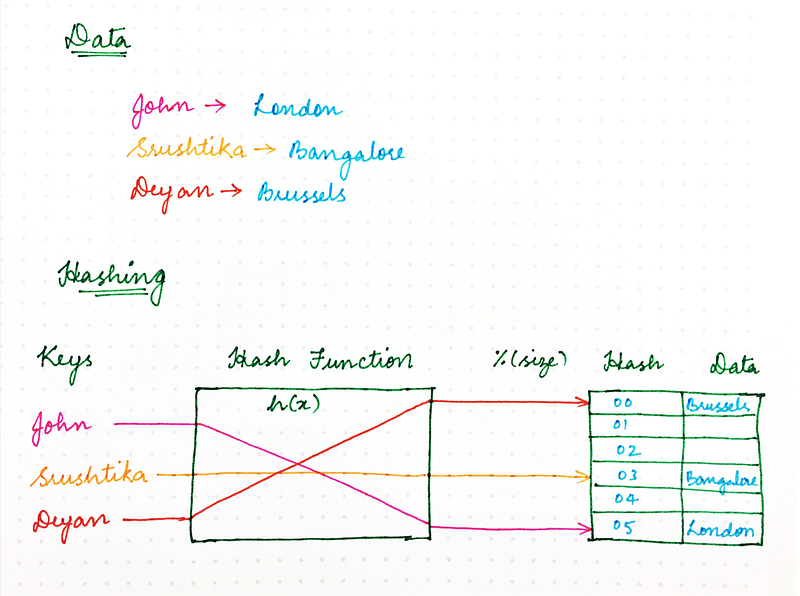Stuff The Internet Says On Scalability For June 29th, 2018
 Friday, June 29, 2018 at 9:04AM
Friday, June 29, 2018 at 9:04AM Hey, it's HighScalability time:

Rockets. They're big. You won't believe how really really big they are. (Corridor Crew)
Do you like this sort of Stuff? Please lend me your support on Patreon. It would mean a great deal to me. And if you know anyone looking for a simple book that uses lots of pictures and lots of examples to explain the cloud, then please recommend my new book: Explain the Cloud Like I'm 10. They'll love you even more.
- 200TB: GitLab Git data; $100 Billion: Instagram; ~250k: Walmart peak events per second; 10x: data from upgraded Large Hadron Collider; .3mm: smallest computer; 9.9 million: spam or automated accounts identified by Twitter per week; 1 million: facial image training set; 1/3: industrial robots installed in China; 24%: never backup; 7 billion: BuzzFeed monthly page views;
- Quotable Quotes:
-
@jason: would love to do a https://www.founder.university/ for Immigrants -- but we might need to do it in Canada or Mexico, so that, umm.... potential immigrants can actually attend! #america
-
@kellabyte: LOL at racking up an AWS bill of $140,000 in 4 hours of compute time.
- @kellabyte: Recently I got to work on a project that really stressed Amazon AWS scalability. You want to talk scale? We spun up a cluster of 100,000 AWS instances multiple times. 2+ million CPU cores. I got to work on something so big a cloud provider learned about their scale bottlenecks
- jedberg: Despite being a strong advocate for AWS, this is where I will say Google completely outshines Amazon. Google's approach to pricing is, "do it as efficiently and quickly as possible, and we'll make sure that's the cheapest option". AWS's approach is more, "help us do capacity planning and we'll let you get a price break for it.". Google applies bulk discounts after the fact, AWS makes you ask for them ahead of time.
- Mark Lapedus: Costs of developing a complex chip could run as high as $1.5B, while power/performance benefits are likely to decrease.
- Quirky: Thus there is a tradeoff: separateness enables inventors to create heterodox ideas, but strong cohesive networks are likely to be better for getting them implemented.
- karmakaze: The key difference is that NoSQL was being developed and used to solve specific issues with using traditional databases. They were implementations of solutions to problems. Blockchain is a solution in search of problems.
- slivym: FPGAs in industry are used for a very small number of specific applications: Smart NICs, Early stages of wireless networks (5G whilst the standards are being hammered out), military (where you need high performance with no consideration of cost), and embedded, Prof Video (where the custom I/O is essential). Generally, unless you're doing something that fits those applications well, the FPGA will not look good, and there are the same mistakes made in research time after time. For data centre these are twice as bad.
- @troyhunt: We [Cloudflare] peaked at 44M requests to @reporturi in an hour yesterday. The busiest single minute I saw was 949k requests or an *average* of 16k requests per second for that minute.
- NSA: Right now, almost all NSA’s mission is being done in [IC GovCloud], and the productivity gains and the speed at which our analysts are able to put together insights and work higher-level problems has been really amazing.
- Robert Graham: This is the most pressing lesson organizations need to learn, the one they are ignoring. They need to do more to prevent desktops from infecting each other, such as through port-isolation/microsegmentation. They need to control the spread of administrative credentials within the organization. A lot of organizations put the same local admin account on every workstation which makes the spread of NotPetya style worms trivial. They need to reevaluate trust relationships between domains, so that the admin of one can't infect the others.
- smidgie82: This article totally ignores the devops side of Docker. Sure, you can cobble together Docker-like process isolation using namespaces and cgroups, and you can run the process using a custom set of libraries using chroot -- though I definitely don't agree that for the average developer that approach is anywhere near as easy as Docker.
- Valeriy Kravchuk: Partitioning bugs do not get proper attention from Oracle engineers. We see bugs with wrong status and even a bug with a clear test case and a duplicate that is "Open" for 4 years. Some typical use cases are affected badly, and still no fixes (even though since 5.7 we have native partitioning in InnoDB and changing implementation gave good chance to review and either fix or re-check these bugs).
- Don't stop here. Follow the clues and you shall...
-
Don't miss all that the Internet has to say on Scalability, click below and become eventually consistent with all scalability knowledge (which means this post has many more items to read so please keep on reading)...






















 Figure 22-1. Example production configuration for the Shakespeare search service
Figure 22-1. Example production configuration for the Shakespeare search service